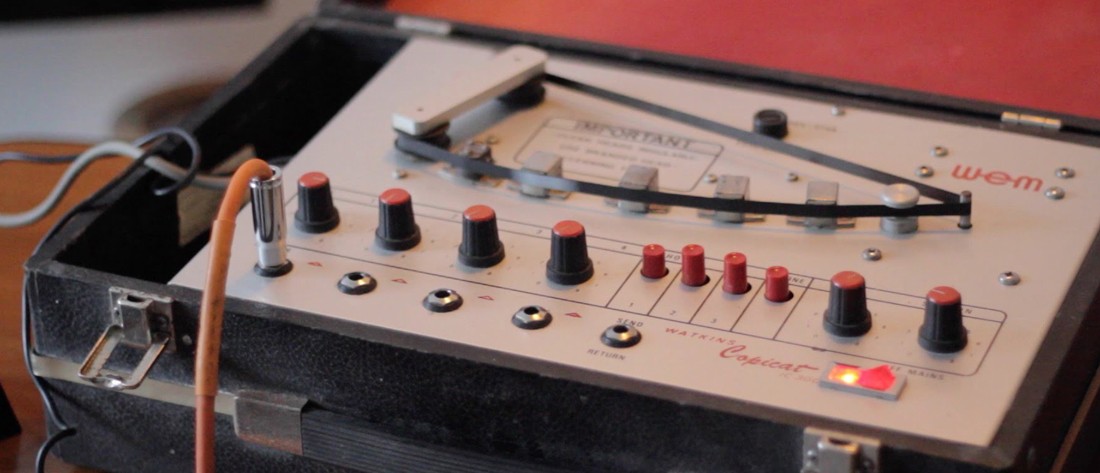4 Classic Analog Delays Not To Be Overlooked
H-Delay is great, stock delays are useful and sample delays are clever! Everything is in the box these days and why shouldn't it be? They're clean, reliable and accurate down to the sample, but for one reason or another there's something unique and special about using classic analog.

Binson Echorec Super Special 2
A standard on Pink Floyd tracks and even Led Zeppelin drums, Binson’s Echorec is an Italian designed unit used heavily on numerous records since the 60s. One on occasion, on the classic 23-minute song ‘Echoes’, Roger Waters used one of these units to create that eerie underwater wind noise in the first interlude by feeding the Echorec with vibrating bass strings using a steel slide. This goes to show how the sounds we produce are limited only by our own creativity and imagination.
From a design standpoint, the Echorec was a completely different beast for its time. It used a custom built steel/alloy disc carrying a durable flat metal magnetic band which was driven by an AC motor via a rubber idle wheel with the playback and record heads arranged around the edge of the drum. This design offered a significant improvement over tape since wow and flutter, common issues with early tape delay models, were greatly reduced.
Overall the Binson has played a big role in recording history as an integral part of experimental sounds since the 60s, echoing its eerie sounds onto classic records by artists such as David Gilmour and Jimmy Page.
1969 Watkins Copicat
In the early days of studio recording, engineers realised they could use tape machines to produce an echo effect by altering the physical distance between the play and record head. Soon, they also realised that they could link up multiple machines to produce a repeating echo, the classic effect commonly known nowadays as tape delay.
The Copicat was the brainchild of Charlie Watkins, who was introduced to the concept of linking multiple tape machines to produce the effect while attending a studio session. Because the machines at the time were big and bulky and required constant attention from the engineers, he saw the opportunity to design a 'magic box' that would replicate the effect, without the added technical complications.
First used by The Shadows on guitars in 'Apache', the Copicat was part of a classic gear trio – a Fender Stratocaster coupled with a VOX AC30 and tied together through the Copicat. The unit would soon lead the sound of a generation as it remained a popular effect throughout the '60s psychedelic bonanza. Although early models were based on a valve design, from 1965 solid-state technology was implemented.
Echoplex Tubeplex
Initially designed by Ray Butts in the '50s as a delay unit built into a guitar amplifier called the EchoSonic, the model was replicated by Mike Battle, an electronics techinician, who made into a portable delay named the Echoplex.
First marketed in 1961, the Echoplex had vacuum tubes and their big innovation consisted of the moving head, allowing the operator to alter the delay time – a novel and very useful feature. A favourite not only for guitar players but also for trumpeters such as Miles Davis, the unit has a warm, rich and full-bodied sound lending itself to a variety of styles.
The Echoplex has received a few modifications throughout the years including the use of transistors, FET-based preamps, LED input meters, tone controls, multi channel inputs and even a mixer section. The famous tape delay has been revered by many including Eddie Van Halen, Brian May, Tom Verlaine, Andy Summers and Jimmy Page for its colour, texture and features.
Roots Vibes have a very special model of the Echoplex in their studios; designed by Mike Battle as a limited edition reissue, only a handful of units were produced to Mike's original specifications sometime in the early 2000s. It sounds absolutely amazing, faithfully capturing the flavour of its original era.
Roland Space Echo
Another classic on our list, the Roland Space Echo series tape delay has been in existence from 1972. Arguably a great mixture of reverb and delay, the Space Echo series never ceased to impress. Warm, gritty and organically analog, these units have been used on everything from dub to house for their unique and instantly recognisable sound.
The beauty of using a Space Echo lies in the way it sits in a mix. Through its combination of graininess and warm, wobbly feel, it manages to tuck itself elegantly underneath the clean sound and provides of credible sense of space adding depth to the resulting sound.
Throuhgout its history, Roland has released a compendium of Space Echos, the first of which were the RE101 and RE201. Later models offered a cleaner sound and even additional effects such as chorus in the RE301 and RE501 renditions. Discontinued in the '90s, Roland now produces the Boss RE-20, a digital delay pedal replicating the sound of the original in a much more cleaner and precise fashion. Even so, we still tend to favour the classic units which we've come to love and enjoy the subtle imperfections such as wobbles and flutters which make these units sound alive and gives them a unique and sought-after sound.